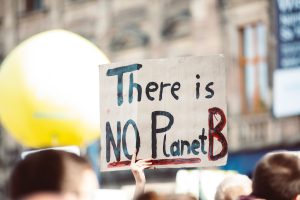Our home and surrounding environments, once considered our most protected places, have become more toxic and dangerous in recent years. Mainly because we choose to bring in large number of toxic objects.
Firstly, we have radiance emitting devices: our cell phones, laptops, cordless phones, microwave ovens, GPS devices, LCD screens, WIFI routers, cellular antennas, etc. All available in our homes and surrounding environments.
In our refrigerator there are vegetables and fruits sprayed with pesticides. In our cupboards, there are toxic substances such as phosphorus-based insecticides, or solvent based detergents and cleaning agents that can cause burns. In our medicine cabinets, there are chemicals that our bodies respond to and are dose-dependent. A larger dose of any such drug is poisonous to our bodies. In our bathrooms, we use single use plastic containers for toothpaste, shampoo and body wash. Plastic was designed to last for long periods and not degrade into the environment. In our tool sheds, we own tools made of plastic and Teflon. These are substances that are still being tested and their effect on our health is unclear.
Teflon is made up of a substance called PFOA, used in other non-stick products. It is carcinogenic, causes environmental damage, and is dangerous for pregnant women as it has been shown to penetrate the placenta and reach the fetal sac. In high temperatures cooking with Teflon based products can release toxic gases.
Our domestic and close external environments are not only our existential space, they are also our existential base of life. In these environments we grow the food we eat, from these environments we draw our drinking water, we build our houses and we reside in them. If our immediate environments are polluted, then so is our food, air, and water. These are the items we consume and become our body’s building blocks.
The growing number of people in the world also increases the impact on our close surrounding environment. The effect of air quality is reflected in a wide variety of diseases, such as asthma, lung cancer and others.
Fresh water gets polluted with fertilizers and pesticides, as well as industrial waste and heavy metals, all of which can reach our drinking water. Currently, the damage is mainly evident in under-developed countries but this will escalate. There can also be biological contamination of water as a result of uncontrolled flow of wastewater into rivers and freshwater sources.
Pollution of the soil is common through the use of pesticides, disposal of trash and refuse and unmanaged disposal of residential and industrial sewage. All these poisons the ground. We can see the effects of these in the context of the onset of cancer. There is evidence of a direct link between a polluted environment and an outbreak of disease.
Additionally, in the name of expedient and cheaper food resources, it is common to use chemical processes that affect the quality of our food and our health. For example:
- Beef and Milk: In order to produce these products quickly and efficiently we farm herds of cows. We need these cows to grow quickly and to produce offspring yearly. However, farmers deal with finite and limited space resources and therefore hundreds of cows are restricted to small areas. Their food is supplemented with growth hormones, to increase their supply of fatty milk. This situation often leads to cattle living in their feces and urine. This, of course, increases the chance of disease and outbreak of dangerous epidemics, some even able to harm the whole herd. To avoid these conditions, cows are provided regular doses of antibiotics. So even if the milk of a sick cow getting large doses of antibiotics is discarded, we are still ingesting milk with antibiotics and hormones.
- Our fruits and vegetables are sprayed with pesticides and estrogen hormones to prevent insect damage and increase fruit size and yield. The pesticides can cause a variety of harmful effects from mild irritation to nervous system problems and even cancer. Research has found links in pregnant women between pesticide concentration in the blood and injury to the fetuses. Additionally. Correlations have been found of farmers exposed to high doses of pesticides and their propensity for cancer.
So, what should we do? Should we decide to eat only organic food or remove all devices from our lives? Will we then be safe?
Unfortunately, even if we refrain from direct consumption of all these substances, we will be exposed to them through our water, soil and air. These toxins will affect our bodies anyway. So we have a catch 22.
So how do we stop the cycle? We suggest it has to start with a decision how many offspring we want to bring to the world. What kind of lifestyle we adapt for ourselves, what environment we want to live in and what kind of food we want to consume. It is a decision relevant to each of us – as an individual and to all of us, as a society.
This article was edited by Tammy Kaplan Zabari.







